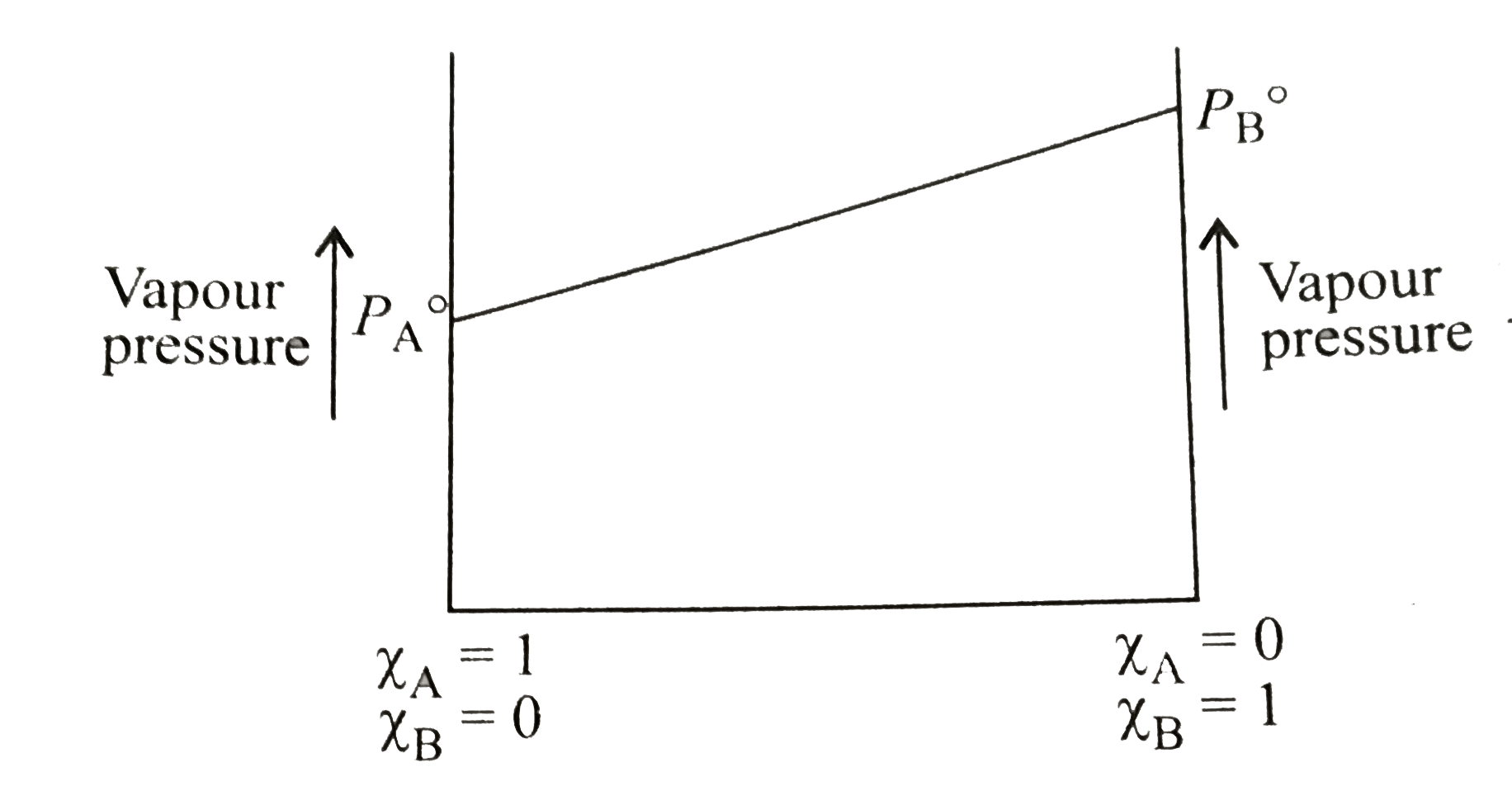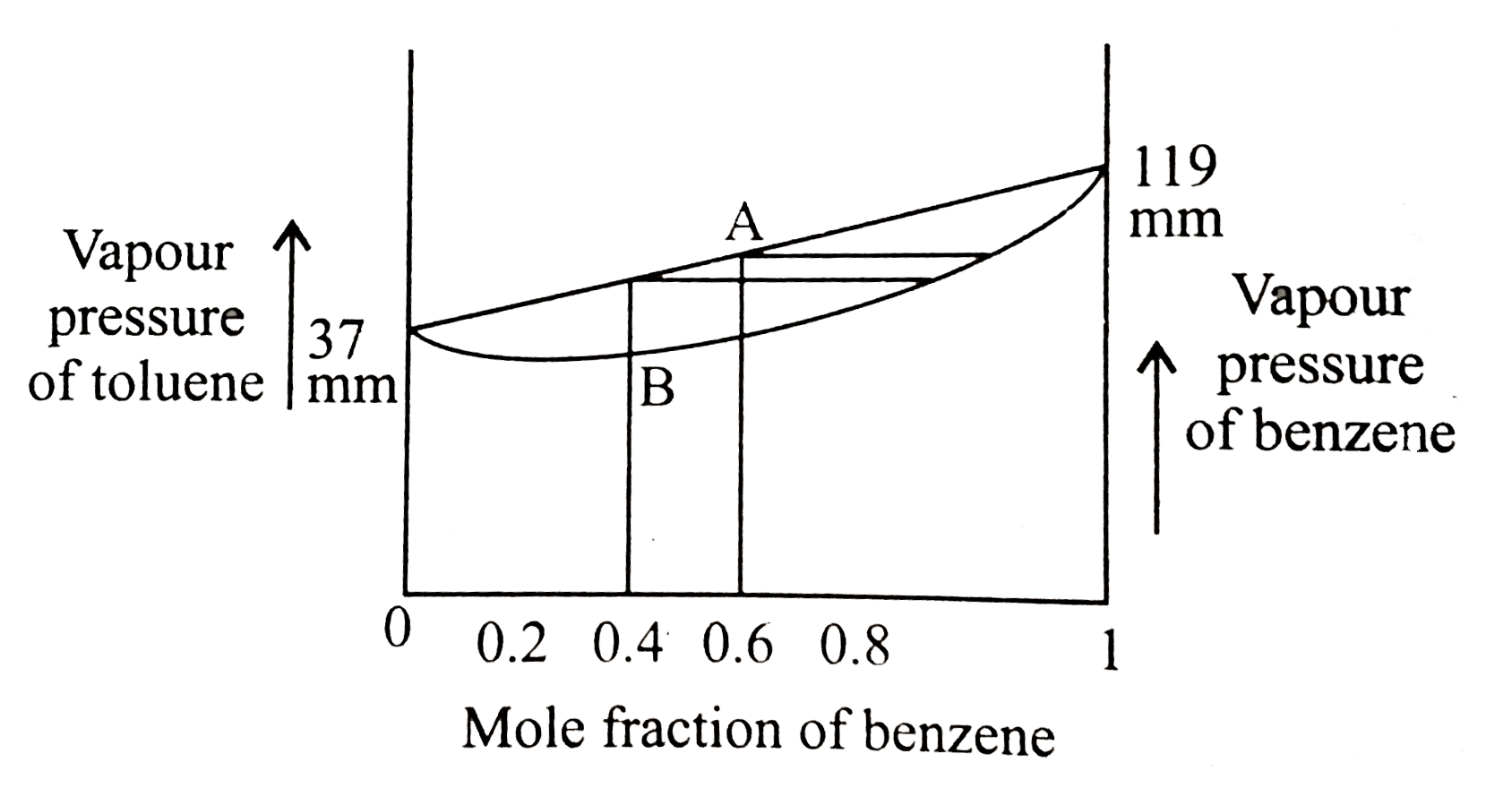Complete Solutions to Exercises (Multiple Correct) of chapter SOLUTIONS of Class 12 book with complete answers and questions
| Class 12 | CHEMISTRY |
| Chapter | SOLUTIONS |
| CENGAGE CHEMISTRY | Exercises (Multiple Correct) |
| Number Of Questions | 25 |
| Academic Year | 2023-24 |
Two miscible liquids `A` and `B` having vapour pressure in pure state `P_(A)^(@)` and `P_(B)^(@)` are mixed in mole fraction `chi_(A)` and `chi_(B)` to get a mixtue having total vapour vapour pressure of mixture `P_(M)`. Which of the following relations are correct?
03:31View SolutionA mixture of two immiscible liquids `A` and `B`, having vapour pressure in pure state obeys the following relationship if `chi_(A)` and `chi_(B)` are mole fractions of `A` and `B` in vapour phase over the solution
02:37View SolutionWhich relations are not correct for an aqueous dilute solution of `K_(3)PO_(4)` if its degree of dissociation is `alpha`?
09:41View SolutionOsmotic pressure of a solution is
01:59View SolutionWhich of the following is/are ture?
06:36View SolutionWhich of the following statements is/are correct?
01:41View SolutionFor a non-volatile solute
02:11View SolutionTo `10 mL` of `1 M BaCl_(2)` solution `5mL` of `0.5 M K_(2)SO_(4)` is added. `BaSO_(4)` is precipitated out. What will happen?
01:56View SolutionA difference between diffusion and osmosis is
00:29View Solution1 mol benzene `(P^(@)_("benzene")=42 mm)` and 2 mol toluence `(P^(@)_("toluene")=36 mm)` will have
02:58View SolutionWhich of the following statements is/are correct?
03:29View SolutionConsider the two solutions:
I: `0.5 M NaCl` aqueous solution at `25^(@)C`,
`NaCl` is complete ionized.
II:`2.0 M C_(6)H_(5)COOH` in benzene at `25^(@)C`,
`C_(6)H_(5)COOH` dimerizes to the full extent.
Which of the following statements(s) is (are) correct?03:46View SolutionWhich pair(s) of liquids on mixing is/are expected to show no net volume change and no heat effect?
05:09View SolutionThe following is a graph plotted between the vapour pressure of two volatile liquids against their respective mole fractions. Which of the following statements is/are correct?
 01:41View Solution
01:41View SolutionConsider the following solutions:
I.1 M sucrose , II. 1 M KCl
III.1 M benzoic acid in benzene
IV.`1 M (NH_(3))_(3)PO_(4)`
Which of the following is/are true?03:58View SolutionThe osmotic pressure of a solution depends on
03:43View Solution`1.2575 g` sample of `[Cr(NH_(3))_(6)]SO_(4)Cl(Mw=251.5)` is dissolved to prepare `250 mL` solution showing an osmotic pressure of `1.478 atm` of `Hg` at `27^(@)C`. Which of the following statements is/are correct about this solution?
04:49View Solution`2 L ` of `1 molal` solution of a complex salt `CrCl_(3).6H_(2)O (Mw=266.5)` shows an osmotic pressure of `98.52 atm`. The solution is now treated with `1 L` of `6 M AgNO_(3)`, which of the following are correct?
08:54View SolutionWhich of the following combinations are correct for a binary solution, in which the solute as well as solvent are liquid?
02:12View SolutionEffect of adding a non-volatie solute to a solvent is"
04:18View SolutionWhich of the following forms is an ideal solution?
02:49View SolutionFor a given value of degree of dissociation, which of the following have correct Van't Hoff factor?
01:46View SolutionChoose the correct option:
 06:45View Solution
06:45View SolutionWhen acetone and chloroform are mixed, hydrogen bonding takes place between them. Such a liquid pair will cause
01:47View SolutionA maxima or minima is obtained in the temperature composition curve of a mixture of two liquids indicates
01:59View Solution
Exercises (Multiple Correct) questions and complete solutions for chapter SOLUTIONS of CENGAGE CHEMISTRY (ENGLISH) of Class 12
All Exercises from CENGAGE CHEMISTRY Class 12 CHEMISTRY SOLUTIONS
- Ex 2.1 (Objective)
- Ex 2.2 (Objective)
- Ex 2.3 (Objective)
- Exercise (Assertion-Reasoning)
- Exercise (Interger)
- Exercise (True/False)
- Exercise(Fill In The Blanks)
- Exercises (Linked Comprehension)
- Exercises (Multiple Correct)
- Exercises (Single Correct)
- Exercises Archives (Fill In The Blanks)
- Exercises Archives (Integer)
- Exercises Archives (Linked Comprehension)
- Exercises Archives (Multiple Correct)
- Exercises Archives (Subjective)
- Illustration
- Solved Examples
